It was nearly a year ago that I saw a prototype of the Peak Design Travel Tripod. Right away, I thought, “I’ve got to get one of those.” Not because I needed a tripod (I already have several) but because it was going to be the right tool for certain jobs.
When I took up photography in high school, I was incredibly lucky to meet a local studio photographer who was willing to let me hang around and learn from him. Kent Whitehead became my mentor, and was one of the nicest, most giving people I’ve ever had the pleasure of knowing. It’s no exaggeration to say that without Kent’s encouragement and guidance, I’d not have had a successful career in photography. One of the many, many things I learned from him was that camera gear are tools, and having the right tool for the job was as important in photography as in any other job.
That lesson has always stuck with me. And that’s why, despite already owning some tripods, I decided to buy this new one from Peak Design. There are three things every photographer wants in a tripod. First, they want it to be sturdy. Second, they want it to be as lightweight as possible. And third, they want it to be inexpensive. Here’s the hard truth – you can have two of those three, but not all three.
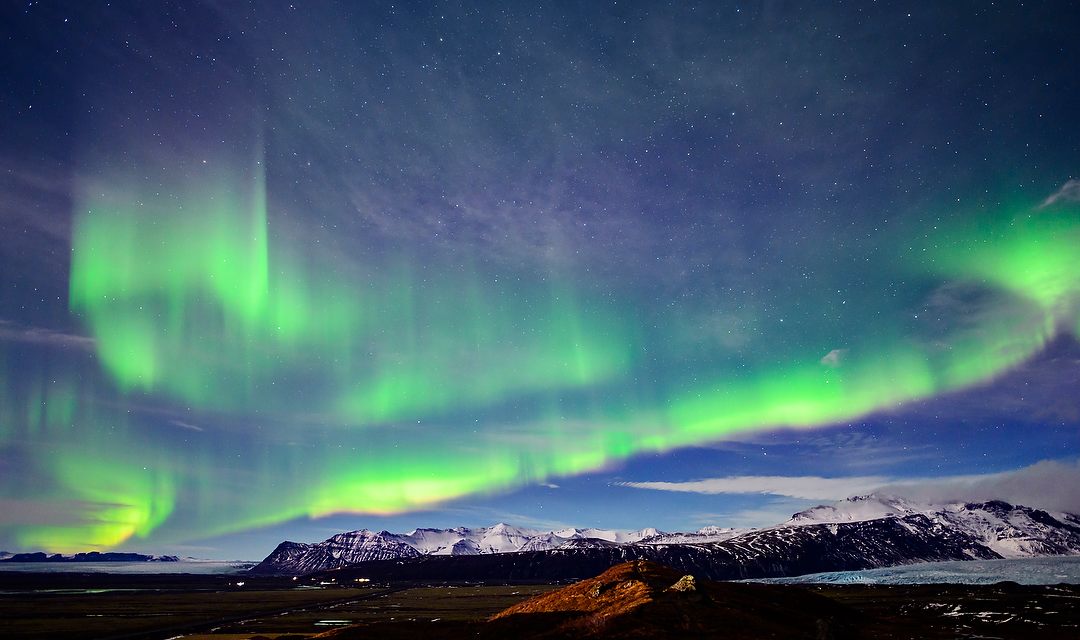
For this photo of the Northern Lights during my Iceland winter workshop last year, it was windy so an ultralight tripod would have been the wrong tool. It was also a trip where we used our tripods a lot, which made it worth bringing along a larger tripod with bigger ballhead. Nikon Z 7, Manual exposure, Sunny white balance, ISO 1600, 4-seconds at f/1.8, Nikkor 20mm f/1.8 lens.
A wobbly tripod might be worse than no tripod at all because you think that since your camera’s on a tripod, you can do time exposures and get sharp results. If it’s wobbly, that’s doubtful. So it needs to be sturdy, and the least expensive way to do that is to make it big and heavy. However, the heavier the tripod is, the less likely you are to carry it, which means you won’t always use it when you should. If you want a sturdy tripod that’s not heavy, you need one made of a lightweight composite, like carbon fiber, and those are expensive. Cameras, lenses, even flashes can be fun to buy, so you don’t mind spending real money on them. It’s less fun to spend a lot of money on a quality filter or tripod (or ballhead, for that matter). But a tripod that doesn’t do the job, or is too heavy to comfortably carry is not a tripod you’re going to use. So lesson #1 about tripods is to bite the bullet and spend real money on a good one. Think of it as a long-term investment, a tool that should give you many years of good service if well cared for.
Now you may be asking, “If Reed already has several tripods, why buy another?” Good question, and it goes back to that “right tool for the job” line. I have a large carbon fiber tripod I use in my studio and when I’ll be working close to my car. I have a smaller, lightweight carbon fiber tripod that I use when I need to carry it some distance and for travel (it doesn’t take up too much room in my luggage). And I have a couple of very small tripods that I take on family trips or when I’m going ultralight. So why would I need another? Because there are times, and trips, where I don’t expect to need a tripod, or only need a good one for a small amount of time. In other words, something that fills that need between my tiny ones and my regular travel tripod. That’s where the Peak Design Travel Tripod fits in. And “fitting in” is a fitting way to put it, because the primary part of its appeal is its small size.
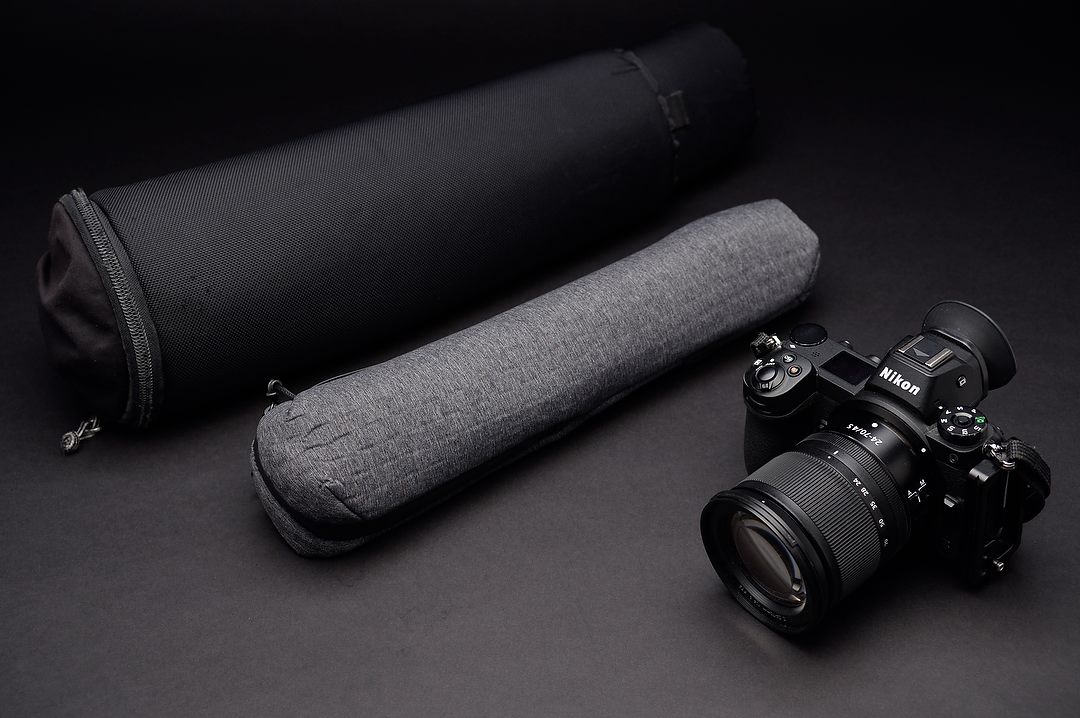
This shows clearly how much space I’ll save when I choose to bring the Peak Designs tripod (in the smaller grey case) as opposed to my regular travel tripod inside its Think Tank Bazooka case (sadly no longer made).
Because of its unique leg design, it’s thinner with the legs folded in than a regular tripod. With five leg sections, it can collapse smaller than my four-section tripod (although the more sections, the less stable). It also has a unique head that’s thinner than any ball head (although you can remove that and attach a standard ballhead if you prefer). And when fully extended, it’s about the same height as my larger travel tripod, but that design of the legs and head means that it’s substantially smaller when collapsed.
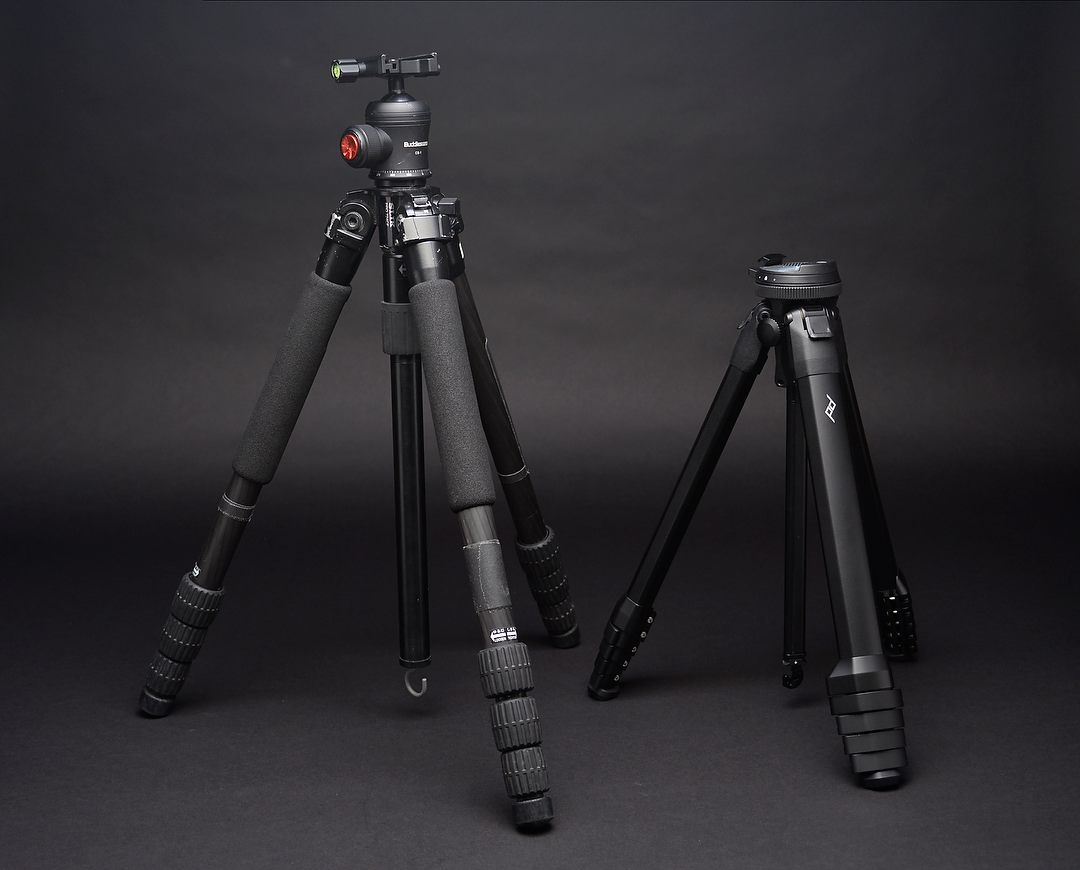
My regular travel tripod, a Slik carbon fiber with ballhead (left), is still pretty light thanks to its carbon fiber legs. With the ballhead, it weighs in at just 3.7 lbs. The Peak Design, at right, is aluminum, so despite being smaller, is just a few ounces lighter than the Slik. However, it’s the size (and quality), not the weight, that drove me to buy the Peak Design.
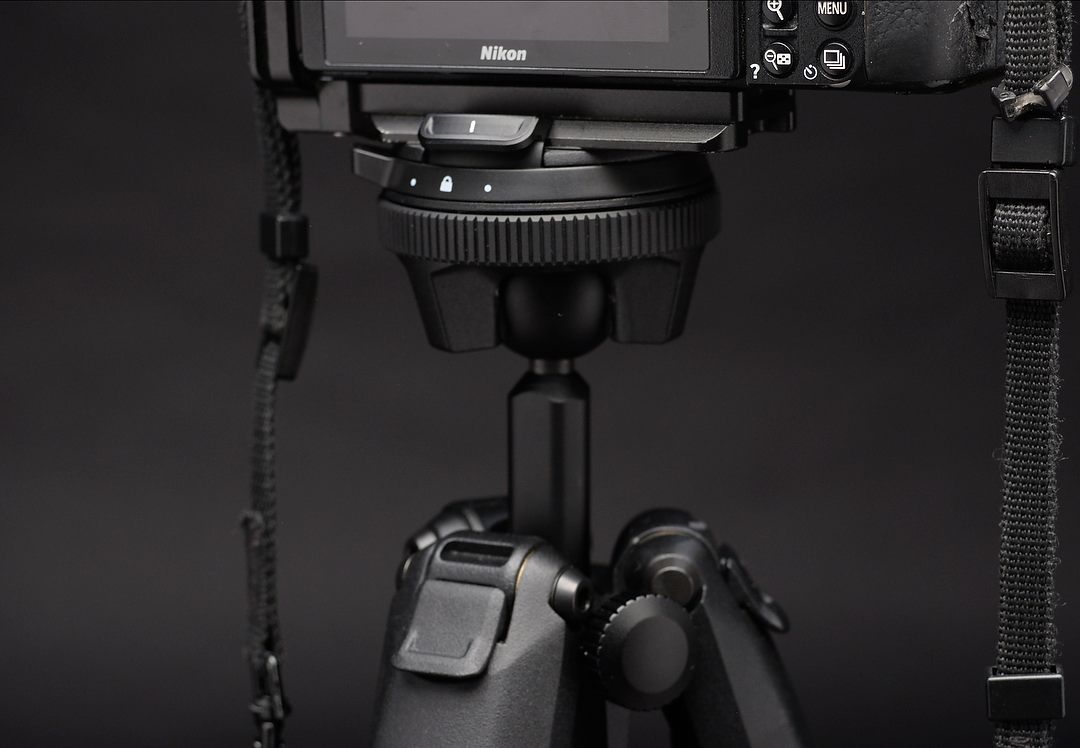
Here you can see the unique built-in ballhead, which nests into the legs when lowered and has both a locking Arca Swiss receiver as well as a rotating lock/unlock for the ballhead. The ballhead can also flip 90-degrees, allowing you to change the orientation of the camera to vertical if you’re not using an L-bracket.
While my other tripods are carbon fiber, in this case I bought the aluminum version. Peak Design makes a carbon fiber version as well, but it’s almost twice as expensive, for a savings of just over ½ pound in weight. If this was going to be my only travel tripod, I may have spent that extra money. However, I already have a carbon fiber travel tripod I really like that’s plenty sturdy for my needs. Remember, this “tool” fills a specific need for me, and so the slightly higher weight of the aluminum model wasn’t an issue here.
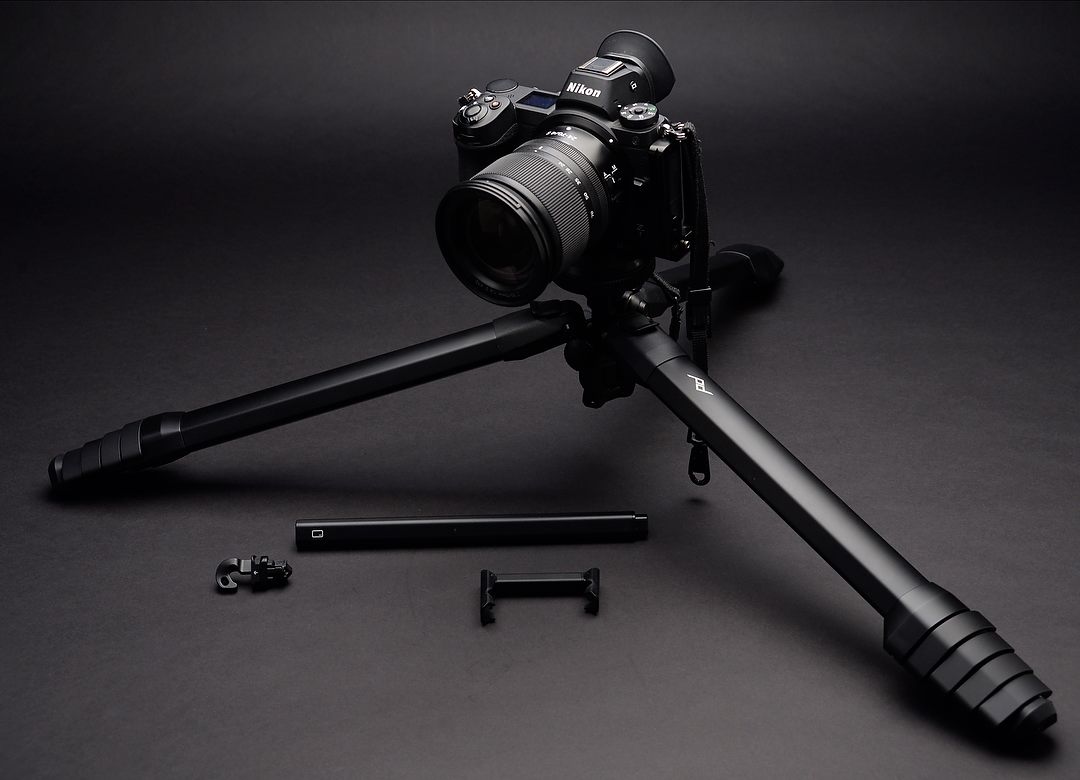
With the center post removed (in a very ingenious way) the Peak Designs tripod can be dropped down to less than six-inches from the ground. I do a lot of low-angle photos, so this is an important feature for me. You can see the removed post here, as well as the hook for the bottom and the smartphone cradle that’s stored inside that post.
Earlier in this story I talked about accessories like tripods and filters not being fun to buy. For this tripod, though, I’ll take those words back. It’s so well designed it’s almost a work of art. There’s no wasted space, it’s sleek, the head is revolutionary. It’s also obvious that careful attention went into even the smallest details (like the smartphone cradle hidden in the center post). It’s one of those things that both looks good, and feels good in your hands.
So how will I use this? When I ordered it, I had in mind the Namibia workshop I was to lead this month (same itinerary as the one I led in 2019, but now postponed to January of 2021). In ten full days of shooting, there were only a couple of times where a tripod was needed. That’s the perfect type of job for this tool, allowing me to still have a good tripod, but take up less space in my luggage.
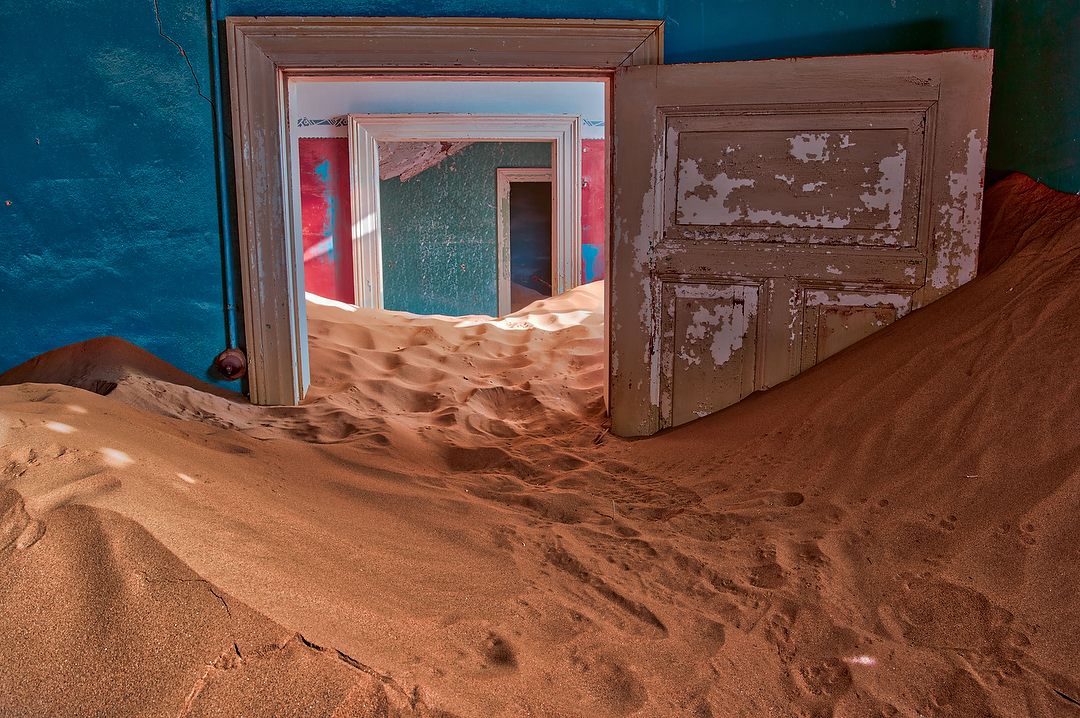
While I certainly could have raised the ISO to make photos in the old German ghost town of Kohlmanskoope in Namibia, having a tripod allowed me to use lower ISOs for higher quality, and smaller apertures then as well. This, however, was one of only two times on the entire trip where a tripod was useful, so the smaller Peak Design would have been perfect. Nikon Z 7, Aperture Priority, Sunny white balance, ISO 100, 1/6 at f/11 in Matrix metering, -0.3 EV, Nikkor AF Zoom 18-35mm f/3.5-4.5G lens at 26mm.
Complaints? At this point, just one. It comes with a really nice carrying pouch (which I’ll attach a strap to and sling over my back). But the pouch is so tightly designed that it’s a bit of a struggle to get the tripod out, and more to get it back in. I’d really like to see a new pouch in the future with just an inch or two more space.
Did I really need another tripod? No, the ones I have work well. But this will make some of my trips easier, and allow me to bring a “real” tripod places I probably wouldn’t have before. And that, in turn, means I’ll have the opportunity to make better pictures. Which does make it worth it. It will be the right tool for the job.
– for more about tripods and the other gear I use, you may want to read this –
(If you like this story, please share it with your friends and let them know about the links on photography that I post on my business Facebook page. I’m also on Instagram and Twitter, @reedhoffmann. And if you’re curious about the workshops I teach, you can find them here.)

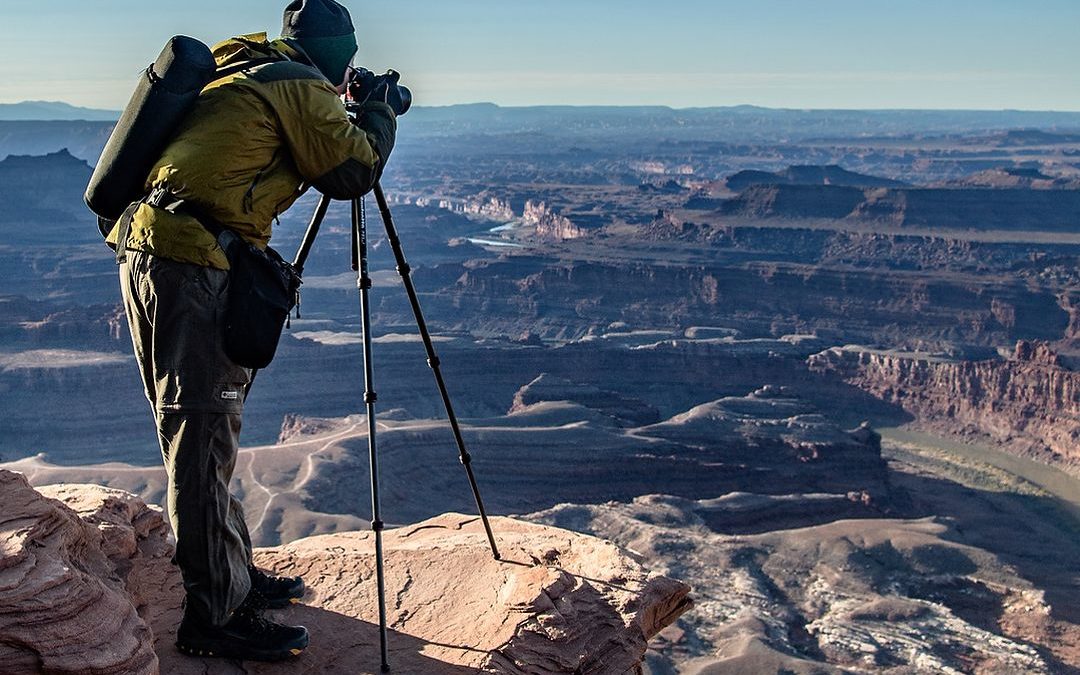
I also bought this tripod for Namibia…looking forward to using it there next year. I am pleasantly surprised with it. Used on a couple of very windy days for time lapse videos without shaking. Really love the size.
That’s great to hear, Allyson. I’m hoping to do a night shoot later this week with it, looking forward to checking the stability.
Reed, I have several tripods also, but recently bought the Peak Travel pod, carbon fiber. It is great. You have put into words why I bought this tripod and will show it to my wife as soon as she stops beating with the new tripod.
See, your mistake was telling Jerre you bought it 🙂